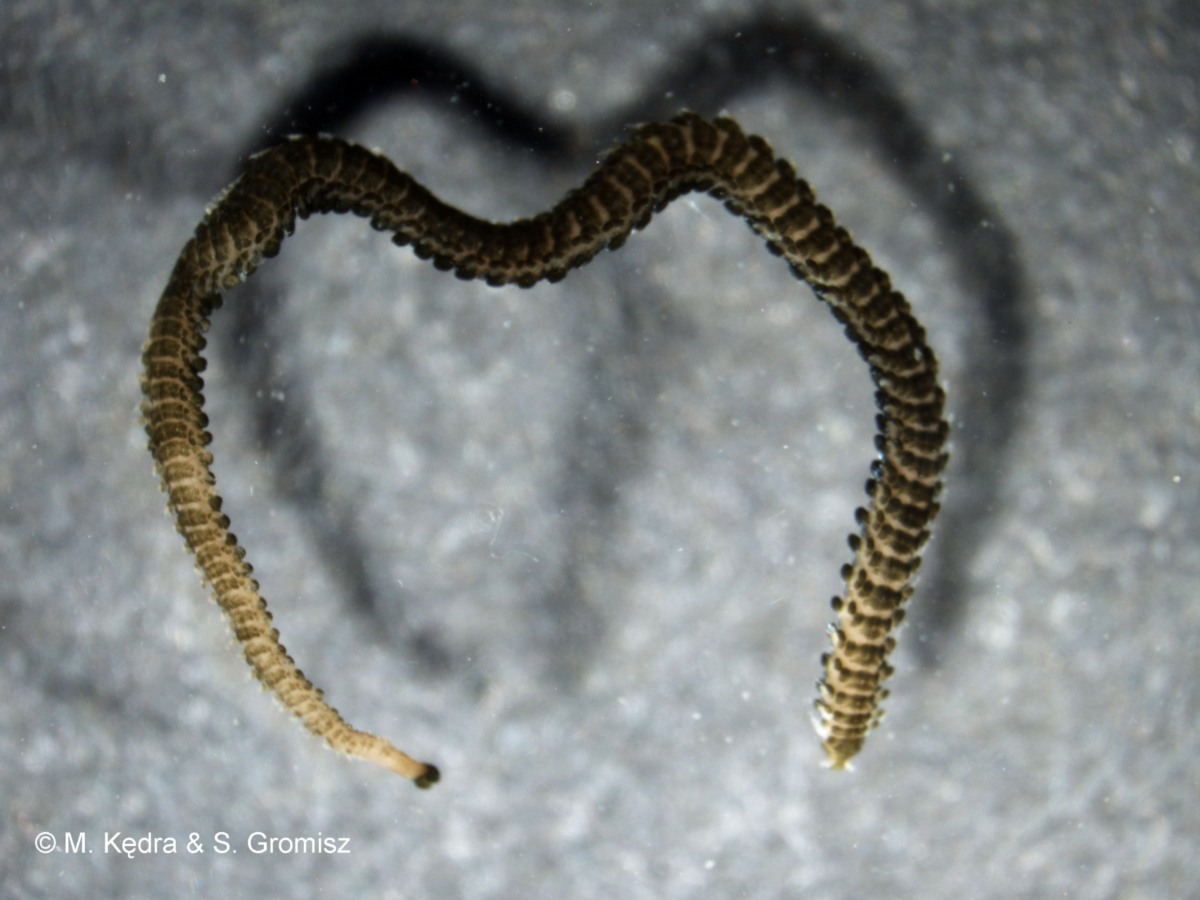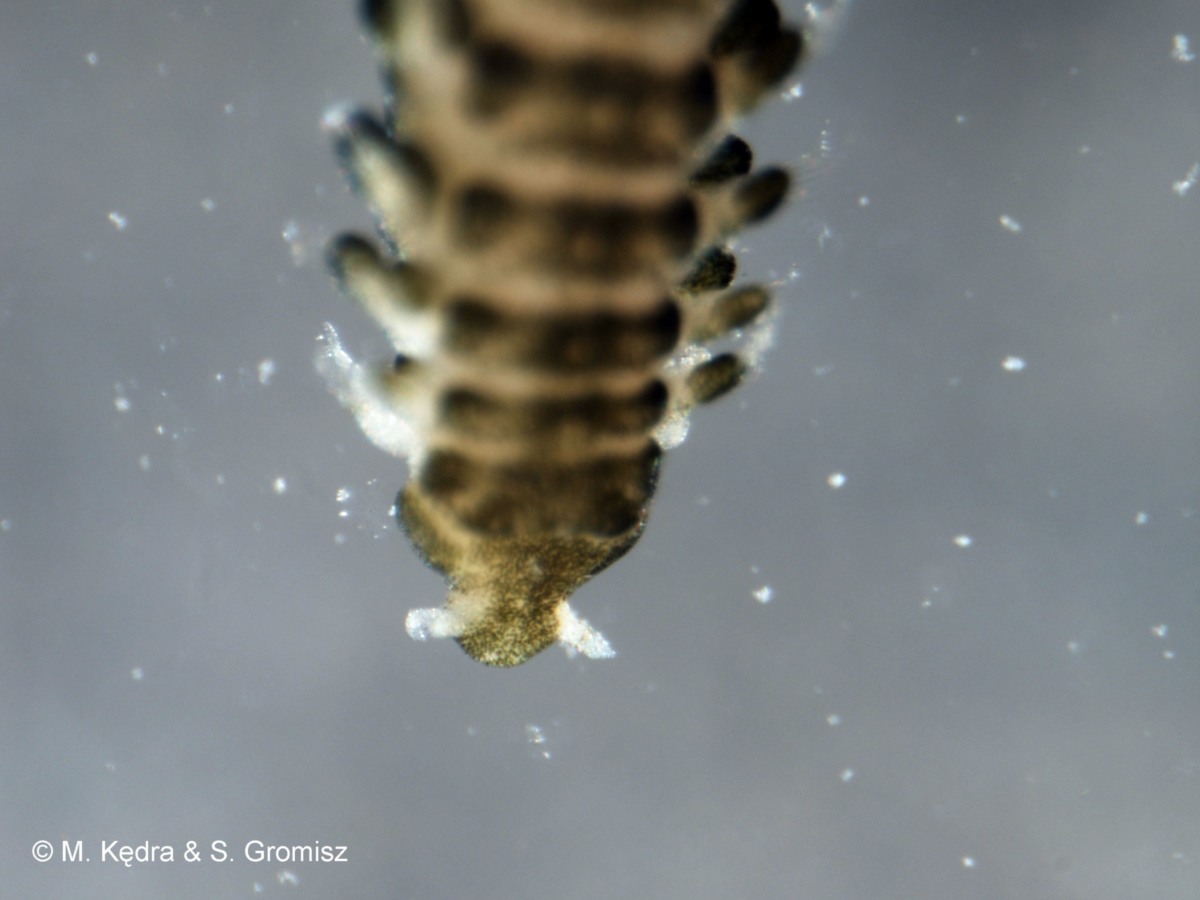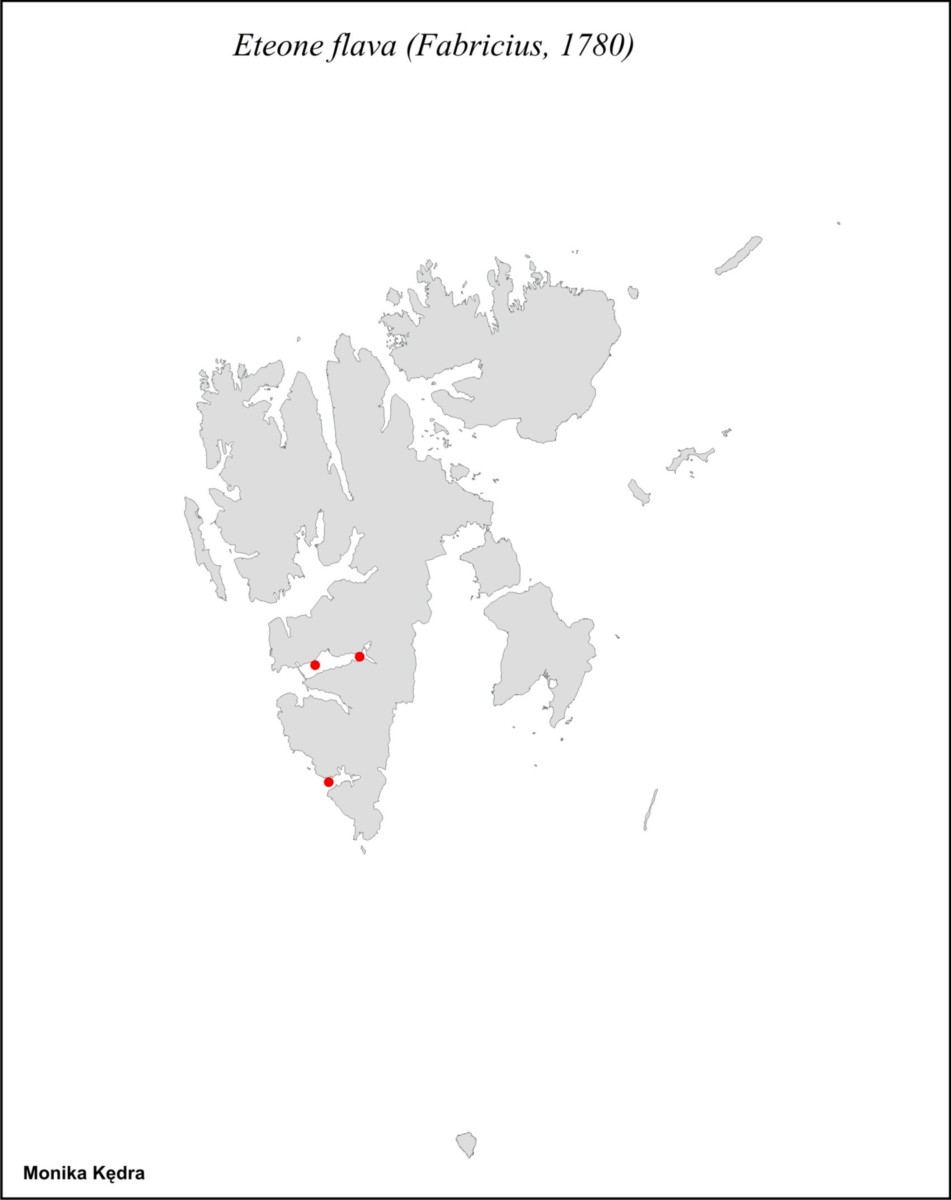Eteone flava (Fabricius, 1780)

|

|

|
Nereis flava Fabricius, 1780; Fabricius, 1799
Eteone depressa Malmgren, 1865; Southern, 1914
Eteone sarsi Malmgren, 1867
Eteone lentigera Malmgren, 1867
Eteone fucata M. Sars in G.O. Sars, 1872
Eteone flava Bergström, 1914
Distinguishing characteristics
2 pairs of tentacular cirri.
Alive animals rose-red to orange.
Ventral pair of tentacular cirri stouter and slightly longer then dorsal.
Dorsal cirri of median segments in larger specimens wider than long.
Species description
Body slender, dorso-ventrally flattened, posteriorly tapered. Prostomium about as wide as long, with convex sides with 2 small eyes. Tentacular cirri short , reaching border between segments 2 and 3. Ventral pair stouter and slightly longer then dorsal. Segment 2 with chaetigerous lobes carrying about 5-10 chaetae and ventral cirri of similar size and shape as those of following segments. Dorsal cirri of median segments oval, in larger specimens wider than long. Ventral cirri oval, about as long chaetigerous lobes. Pygidial cirri ovoid, inflated, slightly longer then broad. Preserved specimens are difficult to separate from E. longa, morphological differences being very slight.
Size
Up to 120 mm for 300 chaetigers.
Color
Alive animals rose-red to orange. Eyes dark red. Preserved animals varying from yellow to brownish, often with darker pigment present medially and laterally on prostomium, laterally on segment 1 and irregularly distributed on the body.
Habitat
Sediments with muddy sand and mud. Depth distribution uncertain due to possible confusion with other species.
Mobility
Mobile.
Feeding
Surface deposit feeder.
Omnivore, predator, scavenger.
Life cycle
Distribution
Arctic, Gulf of St. Lawrence to Maine, Bering Sea, Japan Sea, Iceland, Faroes, Norway to English Channel.

